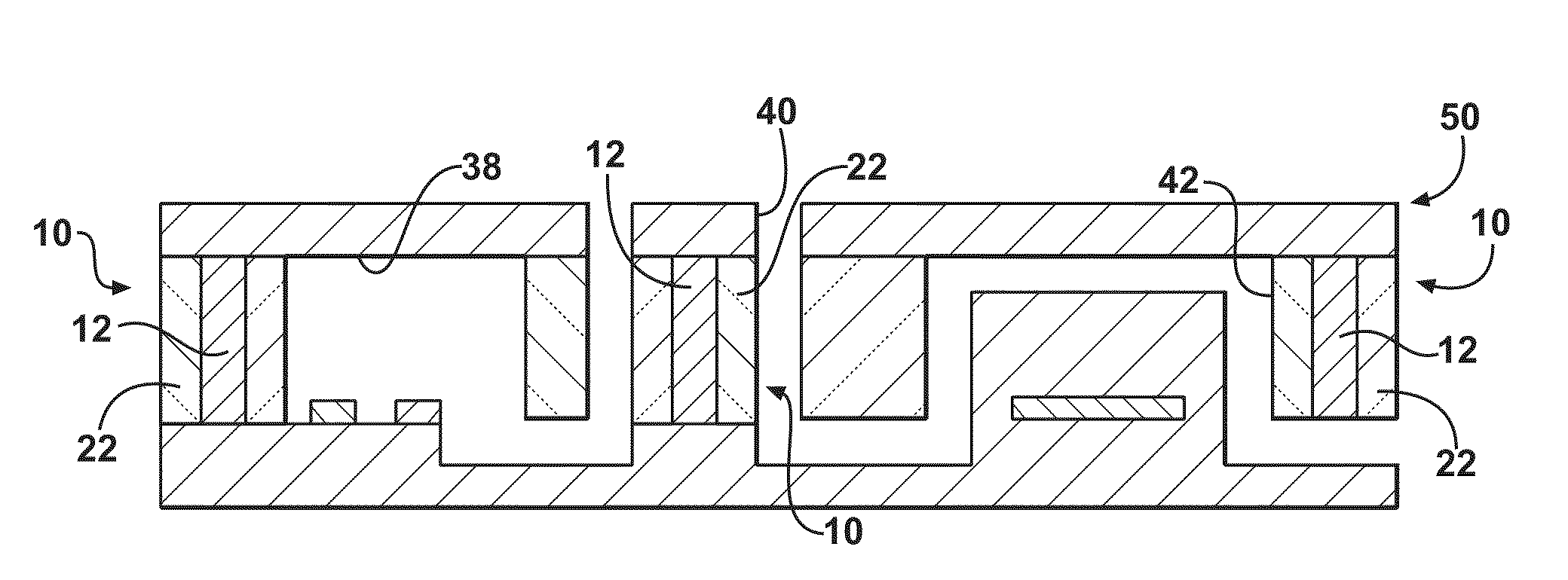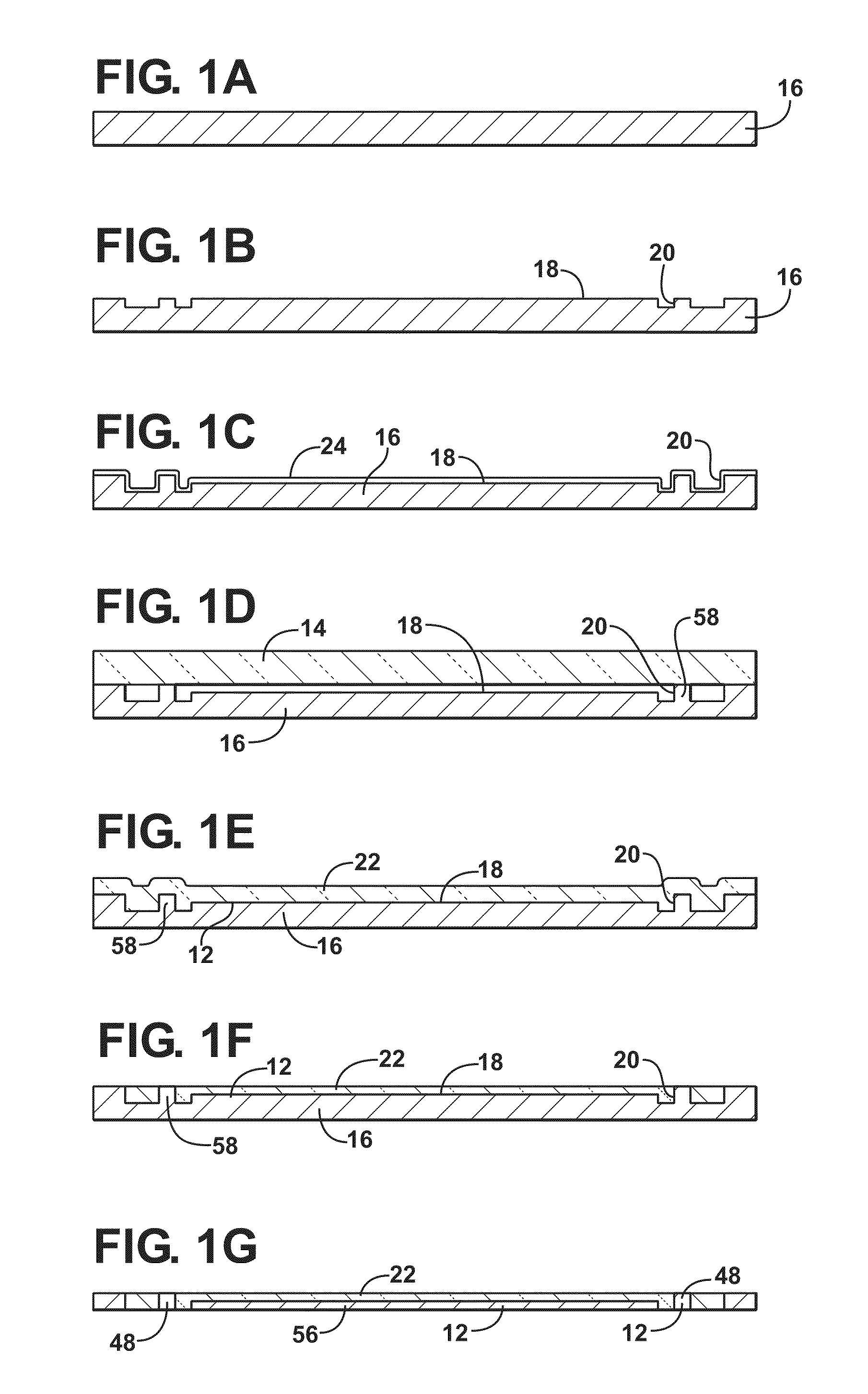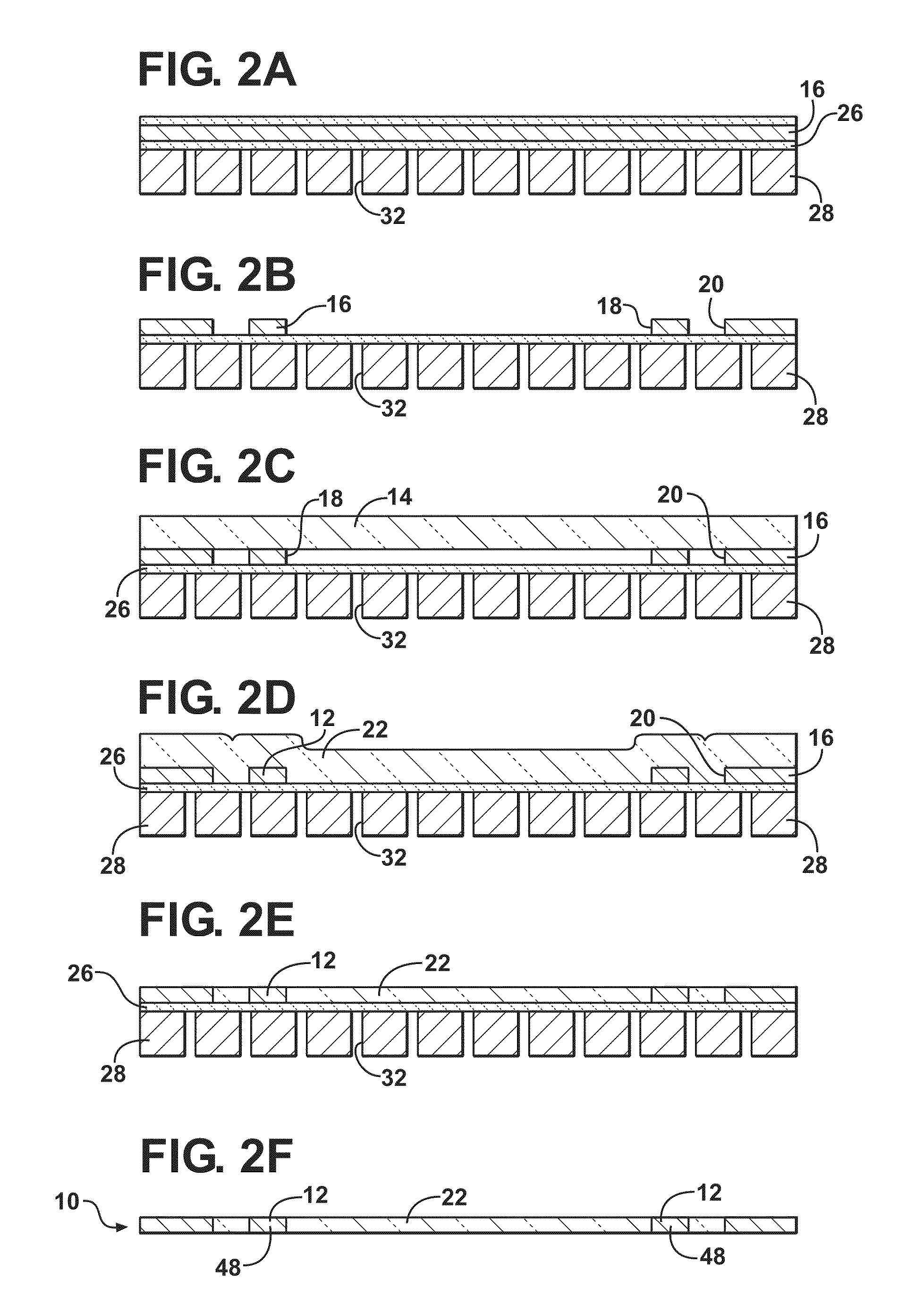Method of Embedding Material In A Glass Substrate
a technology of glass substrate and material, applied in the direction of machines/engines, positive displacement liquid engines, transportation and packaging, etc., can solve the problems of inability to achieve sufficient spatial resolution with sufficient repeatability, traditional glass molding techniques are not considered and the surface wettability of the patterned surface is increased. , the effect of increasing the surface wettability
- Summary
- Abstract
- Description
- Claims
- Application Information
AI Technical Summary
Benefits of technology
Problems solved by technology
Method used
Image
Examples
Embodiment Construction
[0022]Referring to the Figures, where like numerals indicate like or corresponding parts through the several views, a method of embedding material 12 in a glass substrate 10 is provided herein and is shown schematically in FIGS. 1 and 2. The glass substrates 10 formed in accordance with the method of the instant invention have wide-ranging uses as described in further detail below, especially for purposes of solving problems associated with forming through-glass vias 48 and other electrically-conductive elements embedded in glass for use in electronic microsystem applications such as implantable microsystems, where biocompatibility, size, and extremely low power consumption are design considerations. The method of the instant invention avoids many problems associated with conventional techniques for embedding material in glass, and further alleviates conditions that limit minimum thicknesses that can be achieved for glass substrates 10 including material 12 embedded therein that are...
PUM
| Property | Measurement | Unit |
|---|---|---|
| depth | aaaaa | aaaaa |
| total thickness | aaaaa | aaaaa |
| thickness | aaaaa | aaaaa |
Abstract
Description
Claims
Application Information
 Login to View More
Login to View More - R&D
- Intellectual Property
- Life Sciences
- Materials
- Tech Scout
- Unparalleled Data Quality
- Higher Quality Content
- 60% Fewer Hallucinations
Browse by: Latest US Patents, China's latest patents, Technical Efficacy Thesaurus, Application Domain, Technology Topic, Popular Technical Reports.
© 2025 PatSnap. All rights reserved.Legal|Privacy policy|Modern Slavery Act Transparency Statement|Sitemap|About US| Contact US: help@patsnap.com



